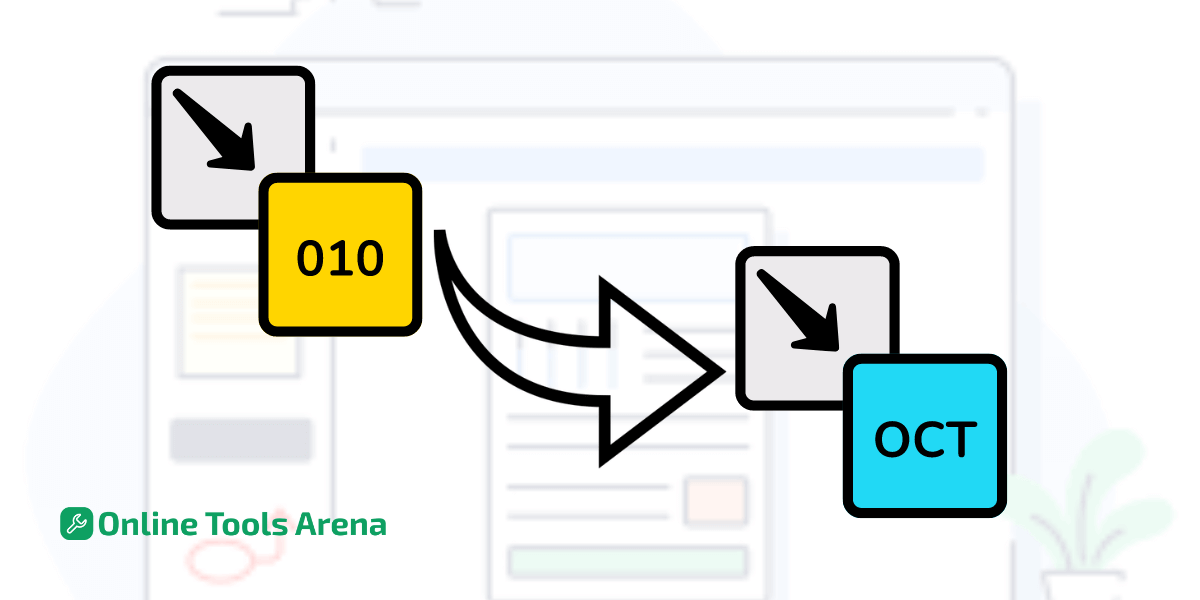
Binary to Octal
Transforming Binary to Octal
Basics of Binary System
The binary system, also called base-2, is a basic number system in digital electronics and computer learning. Unlike our everyday decimal system (base-10), which uses ten digits (0–9), the binary system only utilizes two digits: 0 and 1. Each number shows a power of 2. The first one is like 2 to zero, then comes another with value of 2 to the first part and so on upwards. Binary is great for showing information as electrical signals. Zero can mean off or low power, and one means on or high voltage. This makes it really good for this kind of use!
Basics of Octal System
The octal system, also called base-8, is another way of counting. It's not as popular as binary or decimal systems. In octal, there are eight digits: 0 to 7. Each octal digit stands for a level of 8, just like how each decimal digit shows a power of 10. In history, it has been used for many computer systems and programming languages. It is very helpful in times when using binary form becomes hard, but you don't need the exact details of decimal representation. We often use octal digits to easily show and organize binary information.
Conversion Process
Now that we know the main parts of binary and octal systems, we might need to switch between them. Let's look at how you change a binary number into an octal one step by step now.
Breaking Binary into Groups
Begin with the binary number that you want to change into octal.
Put together the binary numbers into groups of three, from right to left. If you have extra digits that aren't a full set of three, add zeros in front of them.
Every set of three bits will match up with just one number in the octal system.
Mapping to Octal Equivalents
Create a table or reference guide to map each group of three binary digits to its octal equivalent:
Binary : Octal
000 0
001 1
010 2
011 3
100 4
101 5
110 6
111 7
Use your guide to pair each set of two digits in binary with the matching number in octal.
Joining Octal Digits
Find the octal number that matches each group of binary digits. Then put them together to make the final octal form.
Let's show this change process with an example.
Example of Conversion
Imagine we have the binary number 110101100 that we want to change into octal.
Group the binary digits into sets of three: 110 10.563 (use extra zeros if needed).
Refer to the mapping table to find the octal equivalents:
110 corresponds to 6
101 corresponds to 5
100 corresponds to 4
1 corresponds to 001
Join the octal digits together. 6541
So, the binary code 110101 in octal is written as '654'.

How To Use Our Converter
Using OnlineToolsArena's converter for binary to octal conversion is quick and straightforward:
Step1: Type in the binary number you need to change here.
Step2: Click the "Convert" button.
The converter will quickly show the octal value of your binary input.
You can take the result and use it for your needs or more math.
FAQs
What is the difference between binary and octal?
The main difference is in the starting point of the number system and how many digits are used. Binary is a system that uses just two numbers (0 and 1) for its base. On the other hand, octal has eight digits, from zero to seven, as the building blocks of this system.
Why do Unix file permissions use octal?
Unix file permissions use octal numbers because it makes them shorter and easier to work with. They only need three digits for this task. Each number shows what permissions a particular user group (owner, team, and others) has in a short way that's easy to understand.
Can I change octal to binary using the same method?
Yes, you can change octal to binary by doing the steps in reverse. Begin with each octal number, change it to its binary version, and put the binary bits together.











